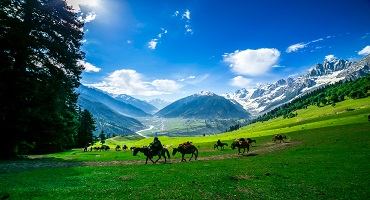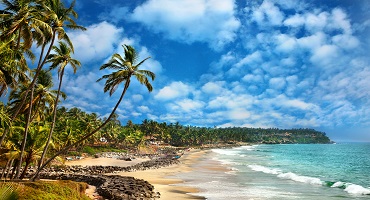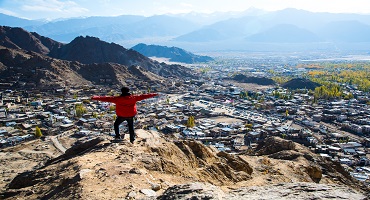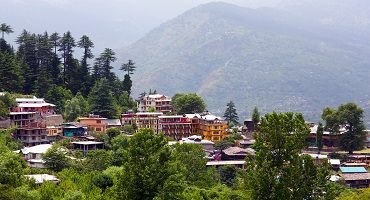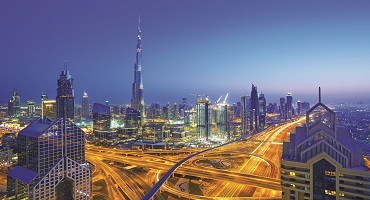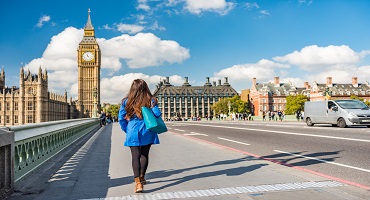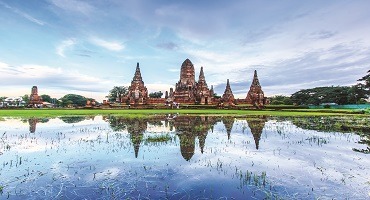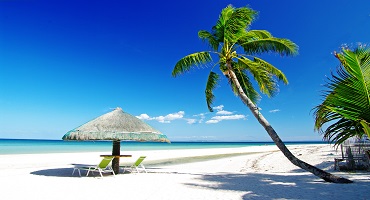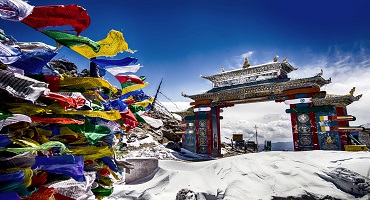Some places are open throughout the year, inviting us to enjoy them in every shade and every season. Some are open for a slice of time, allowing us to catch a glimpse of wonder before shutting the doors again. Badrinath, a small but spectacular holy town in the state of Uttarakhand, is the latter.
Its the crown jewel, the Badrinath temple, stays closed during the cold winters. But the temple reveals in all its spectacular glory in summer – which is the best climate to visit Badrinath. Most of the year though, Badrinath remains cold, chilly and snowy. The average temperature settles at 18 °C – comfortable and pleasant for the most part. With the onset of Monsoon and Winter, the temperatures slide lower and lower, icing Badrinath with the patter of raindrops and then a sprinkling of snowflakes.
While your choices might be restricted in terms of suitability and safety, a trip to Badrinath is a must. Not only is it a part of the annual Char Dam festival, but it is also a town that exudes spirituality through nature. Areas close to Badrinath, like Charanpaduka, Vasudhara falls, Bheem Pul, Brahma Kapal and more draw thousands of tourists because of their role in Hindu legend and lore. Don’t mistake the altitude for having taken your breath away. It’s the beauty, serenity and natural wonder that will steal your heart, soothe your soul and delight the senses.
Peak Season: May-June/ September-October
Off Season: Winter
|
Travel Seasons
|
Min/Max Temperature
|
Weather
|
|
October to April
|
6-25°C
|
Winter - Snowy
|
|
April to June
|
19-29°C
|
Summer - Sunny and Warm
|
|
July to September
|
20-27 °C
|
Monsoon - Moderate to Heavy Rainfall
|
Badrinath weather in Summer (April – June)
Temperature: Badrinath experiences an average of 29 degrees high to 19 degrees low during summer.
Weather: The sun peeps out to bless Badrinath weather in summer. Although temperatures can drop to as low as 8°C, the weather of summer in Badrinath is, for the most part, pleasantly warm. Summer is the time to explore Badrinath and the surroundings. The sun makes the region warm enough, and the lack of snow means moving around is a lot easier and safer.
Significance: This is the season of the famous Char Dham Yatra. Open between April and May; the yatra comprises of 4 important stops, of which Badrinath is the last. While the first three areas – Puri, Rameswaram and Dwarka – remain open throughout the year, Badrinath is open for pilgrimages from April to October. Combine this fact with the pleasant weather of summer and you’ll understand why Badrinath sees the highest volume of tourists during this season.
Why you should visit now: Clear skies, warm days and landscapes to explore, make Badrinath heaven on earth during the summer season. You won’t be snowed in or restricted by the rain, like the other seasons, which makes this the best climate to visit Badrinath. Furthermore, you can experience the spirituality of the temple, the yatra, or your pilgrimage with likeminded individuals – all of whom have come to worship at Badrinath.
Things you should know before you visit: Don’t be deceived by Badrinath’s summer sun. The nights here get chilly, and so packing a few woollens and sweaters will protect you from the temperature drop at night.
Tips: This is peak season in Badrinath, thanks to the Char Dham yatra. Devotees across the country, even the world, make the journey to Badrinath to reaffirm their faith, bask in the spiritual and natural beauty of the area. Booking tickets and hotels might get difficult if you do not book your tickets well in advance.
Badrinath Weather in Monsoon (July-September)
Temperature: Badrinath experiences an average of 27 degrees high to 20 degrees low during the monsoon.
Weather: Cold and chilly days make up a good portion of the monsoon weather in Badrinath. Monsoon may be ideal for exploring the area, except for one hurdle: rainfall. Monsoon showers in Badrinath range from moderate to heavy downpours, and this could hamper your ability to go out and sightsee. July and August receive the most rain, with the droplets drying up to a large extent by September.
Significance: In September, Badrinath opens up to tourists again and you can join in to take the holy pilgrimage. September is also, one of the last months that the Badrinath temple is open. So, the window to enjoy a darshan at the temple is quite slim and must be conducted before winter hits and the snow drifts in.
Why you should visit now: September, in particular, is the second peak season of Badrinath, bringing in a massive influx of devotees and tourists. By mid-September, the rain has tapered off, and you’ll enjoy the occasional shower. It’s enough to enhance the beauty of the area, but not to stop you from moving around.
Things to know before you visit: The monsoon season, be it heavy or moderate, should be carefully considered before you book your tickets. The risk of landslides, in this area, is high during the monsoon, which is why not many tourists or pilgrims choose this season (June and August) to travel to Badrinath. Make sure to keep an eye for the weather. Also, if you’re looking for snow in this season, you’ll find it, icing the higher slopes of the mountains!
Tips: Once again, think carefully before you book your tickets during this season. If you do decide to go ahead, make sure to carry a raincoat, gumboots and trekking shoes, woollen clothing, a windcheater, thick socks, waterproof gloves and more to insulate yourself against the soaking rain and chilly weather.
Badrinath Weather in Winter (October-April)
Temperature: Badrinath experiences an average of 25 degrees high to 6 degrees low during the monsoon.
Weather: While September and a little bit of October remain largely dry and free from snow, mid-October sees the first flakes of winter swirling in. By the end of October, heavy snowfall covers Badrinath like a thick white blanket. Roads to the town are closed, due to the extreme weather and the snow continues to fall on Badrinath till mid-March or early April.
Significance: Usually, in this section, we would describe the events and festivals that take place in this season. However, the weather of Badrinath in winter effectively blocks the world outside, transforming Badrinath into a silent, secluded and snowed-in town. With the temple shut for the next 6 months and snow covering everything, a winter trip to Badrinath is not feasible.
Things to know before you visit: Temperatures drop down to sub-zero levels, rendering the entire area pretty inhospitable to tourists.
Tips: Given the reasons described above, it makes sense to wait till April for Badrinath to open its doors again. Winter gives the region its own form of rest and recuperation before the yatra begins.
Given the importance of the Char Dham yatra to many Hindus across the world, if you are considering joining the yatra, head over to our Char Dham packages page and book your spot to Badrinath for the coming year!

